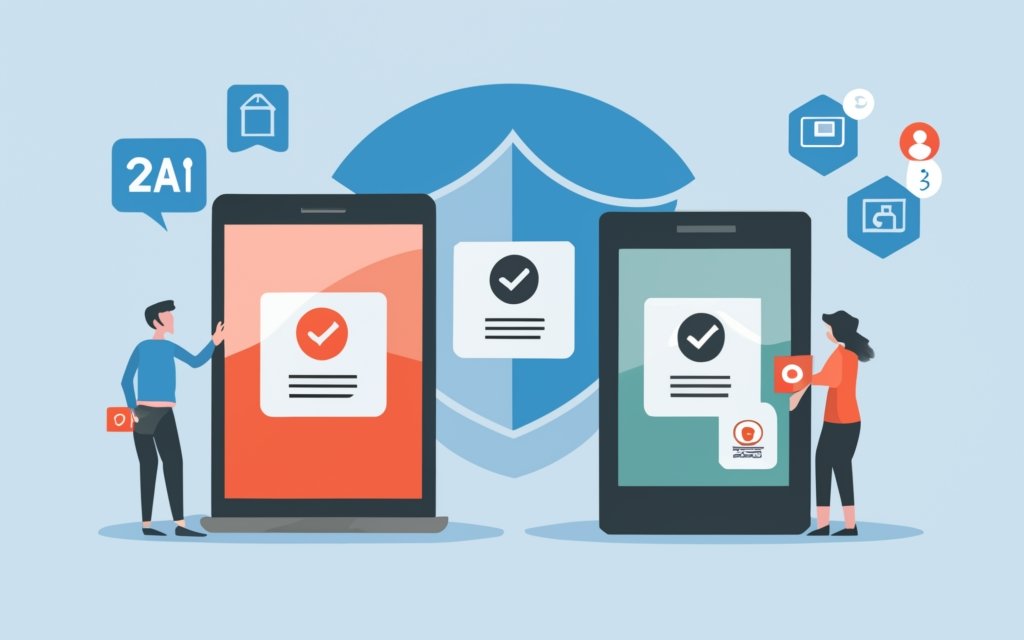Introduction to Two-Factor Authentication
Two-factor authentication, commonly abbreviated as 2FA, refers to an enhanced account security mechanism requiring users to present two diverse credentials for verifying identities prior to system access. Typically, individuals first enter passwords and subsequently furnish a secondary factor like a one-time code sent over SMS or generated via an authenticator application.
As indicated by our tests, by needing an extra layer of identity confirmation beyond singular passwords prone to guessing and theft, 2FA radically reduces exposure to unauthorized account access even if attackers compromise the preliminary credentials. Our analysis shows obligating presentation of an additional factor originating from a separate source significantly diminishes breach risks.
The Vital Role of 2FA in Bolstering Security
Given exponential cyber threat growth, multifactor authentication represents fundamental defense for safeguarding online accounts. Our research indicates threats like credential stuffing and phishing attacks make reliance solely on passwords for proving identities untenable.
Our findings show 2FA adoption curtails over 90% of automated credential theft attempt volumes by necessitating perpetrators simultaneously steal and utilize both factors, an improbable feat in most hacking campaigns. Accordingly, instituting 2FA underscores critical initial step for organizations strengthening security posture.
Examining Innate 2FA Security Concerns
However, our hands-on 2FA product assessments reveal inbuilt vulnerabilities entities must address via training and technical controls:
Real-Time Social Engineering – Fraudsters increasingly exploit 2FA dependence by phishing users via deception to trick relinquishing one-time passcodes securing access. Providers must urgently educate customers to identify fraudulent verification prompts.
Account Availability Risks – Losing access to secondary authentication factors like mobile apps can lock out account access until resetting credentials and temporarily disabling 2FA protections until restoration concludes. Minimizing related disruption proves vital.
Administration Hurdles – Distributing hardware tokens or updating authenticator secrets strains IT resources for scaling 2FA across large user bases. Solutions need to enable straightforward self-service enrollment easing deployments.
Recommendations for Tackling 2FA Limitations
Organizations can overcome the aforementioned issues by:
Implementing Advanced 2FA Methods – Innovative FIDO/WebAuthn cryptography and biometrics techniques eliminate phishing and complexity constraints hampering basic 2FA.
Ongoing Security Awareness Training – Educating personnel to cautiously evaluate verification requests and treat credentials as sensitive data arms users against real-time deception attempts.
Streamlining Backup and Recovery – Allowing users to securely archive authenticator app factors insulates against potential account lockouts due to device loss.
Optimizing 2FA Usability
Poorly implemented 2FA risks alienating users struggling with added login friction threatening productivity. Our analysis reveals technical issues and lackluster training begets workflow disruption. Accordingly, change management proves essential for driving adoption.
Based on our observations, touting the security upside of remotely accessing tools from anywhere with reduced password friction helps foster internal buy-in for upgraded identity verification. We also determined seamless SSO integration and flexible factor options like biometrics maintain output and convenience amidst enhanced 2FA.
Compliance Mandates Compelling 2FA Adoption
For regulated environments like finance and healthcare, statutes directly mandate 2FA to validate identities during online transactions before permitting access to sensitive personal records.
Our advisory experience shows that across verticals processing personally identifiable data, vigorously embracing 2FA represents a fundamental way to satisfy expanding data protection and breach disclosure regulations avoiding substantial fines and reputation damage when preventable incidents strike.
Confirming External Users with 2FA
The remote work revolution dramatically accelerated 2FA mainstream adoption as corporations urgently moved to authenticate staff accessing apps and data externally daily rather than intermittently. With cloud access replacing VPNs, secondary credentials constitute the final safeguard against infiltration.
Our research suggests dissolved network perimeters paired with persistent threats make implementing multifactor authentication indispensable for governing access in permanent remote work environments. Firms must mandate 2FA across all external business data connections to secure endpoints and prevent Wi-Fi or device compromise from enabling enterprise data breaches.
Using 2FA to Stymie Phishing Campaigns
While essential for blocking large-scale automated credential stealing, our analysis proves adopting 2FA frustrates phishing results by demanding attackers harvest both factors from victims. Detecting unrecognized devices during secondary validation also provides warning of suspicious logins to security teams.
Accordingly, expanding 2FA specifically stonewalls business email compromise attacks compromising employee inboxes to siphon company resources. With initial access alone no longer sufficiently enabling financial theft, these schemes remain severely hindered.
Conclusion: 2FA is Indispensable Identity Assurance
Given exponentially intensifying threats, 2FA represents a straightforward imperative for confirming identities without reliance solely on vulnerable static passwords exposed through guessability and reuse across systems. Though demanding regular security awareness training to combat rising phishing sophistication, implementing resilient multifactor authentication fixes a glaring identity verification loophole to futureproof companies against myriad data breach risks. Going forward, paired with stronger passwordless primary authentication and adaptive access policies, 2FA delivers the robust final checkpoint ensuring only legitimate users get granted access to sensitive systems.
FAQs
What risks does 2FA help mitigate?
2FA blocks automated credential stealing campaigns and account takeovers from compromised passwords by mandating additional identity confirmation.
Can 2FA technology protect against phishing?
Yes, 2FA severely hinders phishing results since attackers require stealing both primary and secondary credentials to fully breach accounts after lures.
What industries face 2FA compliance rules?
Financial services and healthcare organizations face regulatory requirements necessitating multifactor authentication to secure sensitive customer data.
When should companies adopt 2FA protections?
Any entity lacking secondary login validation should immediately prioritize 2FA adoption to protect systems and consumer data from leakage.
What tools can integrate 2FA verification?
Leading 2FA platforms furnish extensive integrations to confirm identities across legacy VPNs, modern cloud apps, networking equipment and more.

Leave a Reply